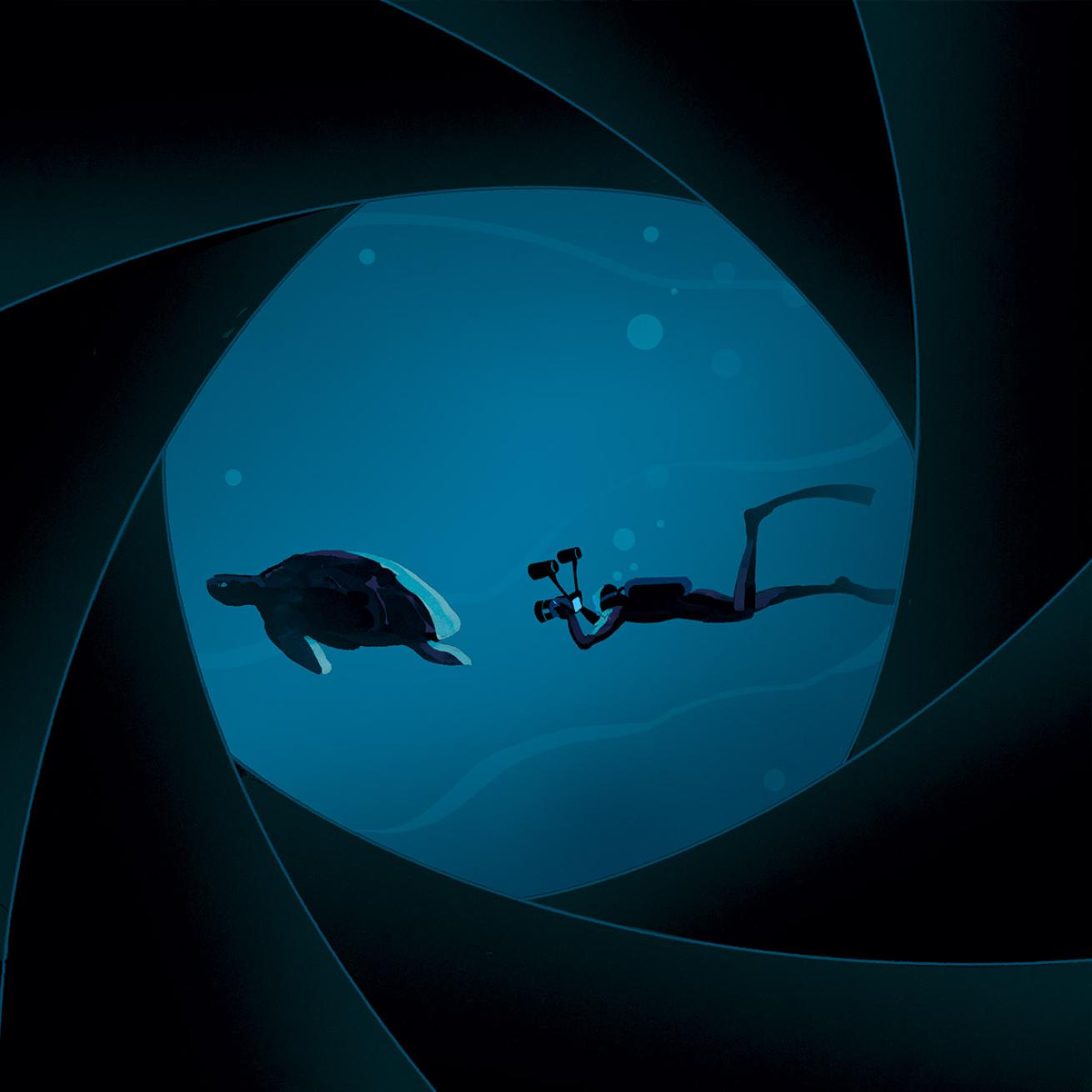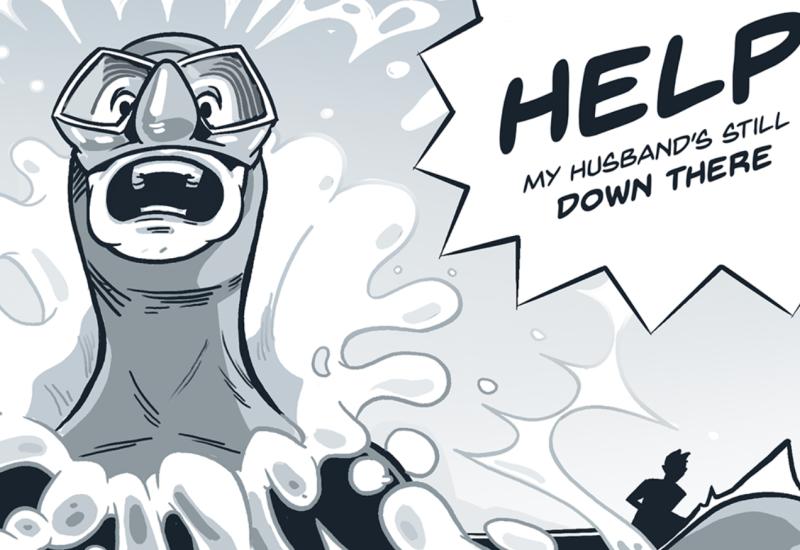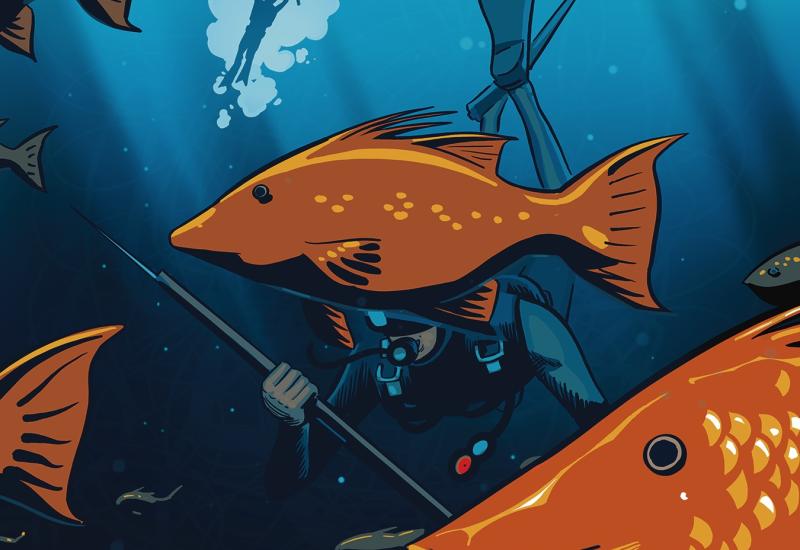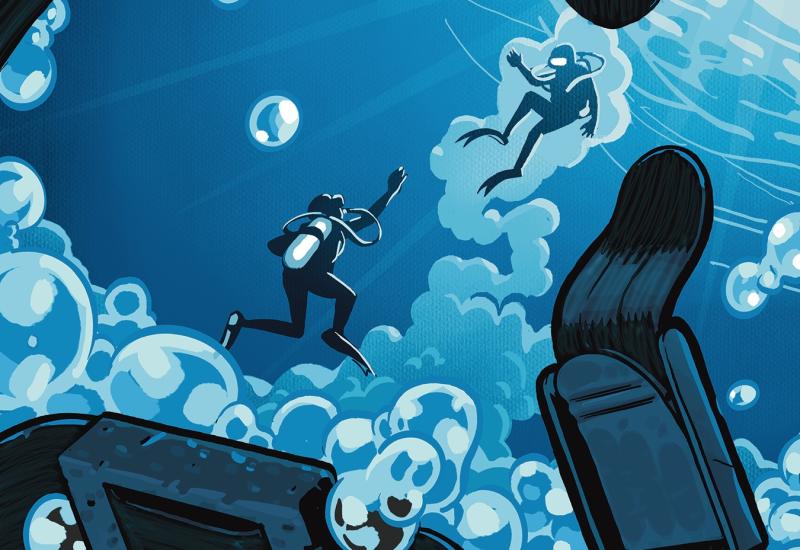Task Loading Takes an Underwater Photographer to the Brink of Danger

Carlo GiambarresiWhatever your reason for diving, whether for fun and relaxation, exploration, science or photography, you can’t forget the fundamentals.
Jeff dreamed of being a great underwater photographer. In truth, he was good, but he knew getting to be “great” would take lots of time and practice. He did his best to shoot as much as he could on every dive. He had recently upgraded his underwater camera system and was excited to be in the water with it for the first time. He could see that learning to position his external strobes correctly while finding appropriate subjects was going to take some effort. His new camera was bigger and heavier than his previous one — it was trimmed out to be mostly neutrally buoyant, but he could tell it produced more drag as he pushed it through the water.
When Jeff spotted a large green sea turtle nearby, he decided it would make the perfect first subject for this camera. He immediately took off after it.
The diver
Jeff was an experienced diver, with several hundred dives under his belt, in relatively good shape, and in his mid-40s. Not long after he began diving, he got his first underwater camera — a basic submersible point-and-shoot — and he was hooked. He loved the reaction he got from nondiving friends when he showed them his pictures. He had even won a couple of local photography contests.
The dive
Jeff and his buddy were diving from a local charter boat. They had an understanding that Jeff was there to take photographs. His buddy usually followed along and kept an eye on him.
Conditions were perfect when they entered the water — warm with a cloudless sky. It was midmorning, so the reef was shimmering with sunlight. They were diving on a site 60 feet deep. Not far from their location, the reef dropped off to 100 feet and beyond.
Jeff took a few photographs of the reef, just trying to learn to use his new camera and get a feel for the controls. He glanced back from time to time to see his buddy following along behind, looking at some of the smaller critters on the reef and generally staying out of the way.
When Jeff saw a large green sea turtle swim by, he took off after it. He wanted to get a close-up shot of the turtle’s face. Jeff swam around a coral head, trying to get in front of the turtle, but it turned away just as he got close. As he swam, Jeff checked the controls on his camera and the strobes, guessing about the proper angles for both external lights and trying to get them positioned for the shot he envisioned.
Looking for food, the animal seemed to ignore Jeff. But every time Jeff attempted to get in front of the turtle, it moved. Jeff was working hard, swimming as quickly as he could while pushing the camera. Finally, the turtle had had enough of the cat-and-mouse game and moved on down the reef. Jeff realized he wasn’t going to be able to catch the turtle this time. He never got the photo he was looking for. That’s when Jeff looked around for his buddy and discovered he was alone.
The accident
When Jeff realized he didn’t know where his buddy was, he looked at his air and depth gauges. He was much deeper than he had planned to go. He had moved past the edge of the reef and was more than 100 feet underwater. His second shock came when he looked at his air-pressure gauge. He was down to 500 psi and had no idea where the boat was.
Jeff knew he didn’t have time to look around for his buddy. He decided to make a direct ascent to the surface instead of following the reef back toward shallower water. He planned to look for his buddy while he swam. It wasn’t an emergency so he made a normal controlled ascent, but he was concerned he was going to be cutting it close. He hoped he could make it to the surface before running out of air.
As Jeff ascended, he could see more of his surroundings. He finally located his dive buddy a short distance away, still on the reef at around 60 feet. Jeff’s buddy had been looking for him, and saw Jeff making his ascent. The buddy gestured for Jeff to descend toward him, but Jeff signaled that he was low on air and had to ascend. Jeff continued heading for the surface and his buddy began his ascent, catching up to him near the surface.
Jeff reached the surface with 200 psi left in his tank. The divers spotted the dive boat nearly 50 yards away. Both divers gave the boat crew a big OK signal, indicating they were fine. Then they began the long surface swim back to the boat.
Analysis
Whatever your reason for diving, whether for fun and relaxation, exploration, science or photography, you can’t forget the fundamentals. Those include monitoring your depth, bottom time, air supply, basic navigation and your buddy’s location. In this case, Jeff neglected all of them.
Jeff was so wrapped up in using his new camera gear, and the pursuit of the turtle, that he forgot everything else. This situation turned out all right, but it could have very easily been otherwise.
Often, divers use the phrase “same day, same ocean” to joke about their buddy-diving process. They mean they might enter the water together and exit together, but don’t spend much time together while submerged. Obviously, this isn’t good buddy practice. If you plan to dive like this, seek out additional training in solo diving and be prepared to go it alone should you get in trouble.
If you’re not diving solo, you and your buddy should be prepared to look out for each other.
Even solo divers need to monitor their air supply, and depth and time underwater. Jeff’s failure to do so is inexcusable. The best analogy is to take a drive in the desert and get so excited about the music you are listening to that you forget to check your speed, fuel supply or even the direction you are heading. At some point, you are going to run out of gas in the middle of the desert without any food, water or idea how to get back to civilization.
You could make the case that Jeff’s buddy failed him by not keeping up with him and following along while Jeff pursued the turtle, but all it took was a momentary glance away when Jeff took off for them to become separated. It would be the unusual diver who never lost sight of his or her buddy for a minute or two, even when one diver isn’t so completely absorbed by a particular objective.
Often, underwater photographers will spend an entire dive setting up a shot and waiting for the critters and light to be just right. If you are a photographer who dives like that, you and your dive buddy need to have an agreement about your dive plan. Your buddy should be prepared to stay with you, in sight and within easy access. This is harder on the dive buddy, of course. He or she has to watch out for you and be prepared to keep up with you should you take off in pursuit of an animal.
As the photographer, you must agree that if your dive buddy interrupts the shot and signals that there is a problem, photography takes a back seat to whatever else is going on. Your buddy might be merely pointing out something you missed while your focus was elsewhere, but he might also have a serious problem that requires your immediate attention.
Lessons for life
- Monitor your depth, time and air supply. These are basics every diver learns, but overconfident divers can also forget about them and get into trouble.
- Stay with your buddy. Or learn to dive solo, including carrying the additional gear and emergency air supply necessary.
- Avoid new-equipment tunnel vision. Don’t get so focused on a new piece of equipment that you forget the basic lessons of diving. If necessary, practice with the new gear in a pool or controlled environment so it doesn’t require all your focus.










